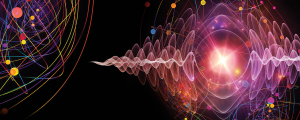Content:
n one of the University of Sheffield’s physics labs, a few hundred photosynthetic bacteria were nestled between two mirrors positioned less than a micrometer apart. Physicist David Coles and his colleagues were zapping the microbe-filled cavity with white light, which bounced around the cells in a way the team could tune by adjusting the distance between the mirrors. According to results published in 2017, this intricate setup caused photons of light to physically interact with the photosynthetic machinery in a handful of those cells, in a way the team could modify by tweaking the experimental setup.1
That the researchers could control a cell’s interaction with light like this was an achievement in itself. But a more surprising interpretation of the findings came the following year. When Coles and several collaborators reanalyzed the data, they found evidence that the nature of the interaction between the bacteria and the photons of light was much weirder than the original analysis had suggested. “It seemed an inescapable conclusion to us that indirectly what [we were] really witnessing was quantum entanglement,” says University of Oxford physicist Vlatko Vedral, a coauthor on both papers.


